Trees have an essential role in our planet’s ecosystem. They provide shelter and housing to a wide range of animal and plant species, occasionally produce fruit,
and those whose leaves fall off in the fall play an important part in keeping local soil nutrient-rich. The most important thing that trees do by far is produce oxygen to support all of the world’s animal life.
There are lots of different species of tree in the world, so knowing how to identify or categorize them will make things a bit easier!

This article will cover some of the brown species of tree that are common throughout the world. Yes, we do know that just about all trees have some sort of brown on them – bark,
branches, and sticks are almost always a shade of brown – so compiling this list was no mean feat!
Keep reading to find out more about brown trees that might just be living in your garden.
1. Hawthorn Or Crataegus
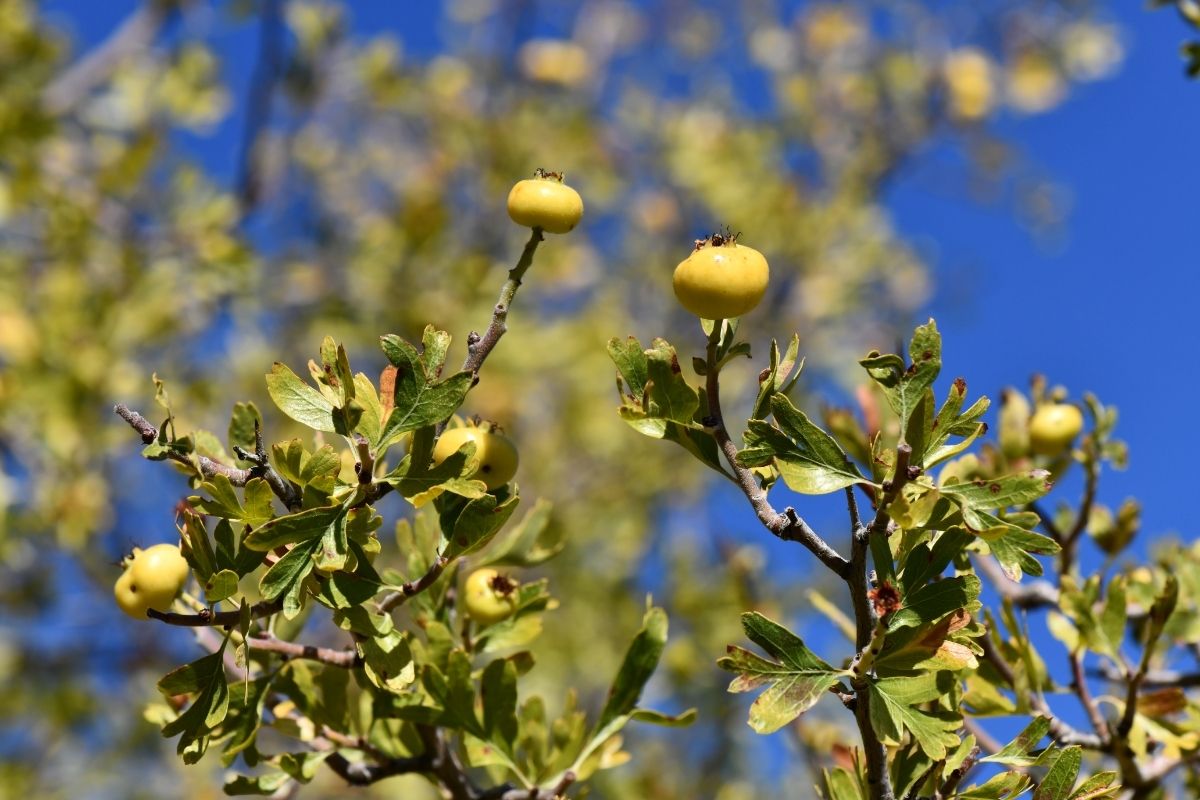
The hawthorn or crataegus tree is small, brown with a very distinctive and pleasing shape and overall structure. The bark of these trees is super scaly and they are found frequently in nature.
This is primarily because they are so small that they cannot be used economically on an industrial or commercial scale.
The hawthorn tree is famed for its beautiful flowers and fruits in the summer.
2. White Ash

Found around New York, the White Ash tree is one of the fastest-growing trees in the world. The wood that these trees produce is often used for furniture, tools, and sporting equipment because it is robust and very durable.
The bark of this tree is brown with cool undertones. As such, it often appears gray in a bleak light. The leaves grow in distinctive clusters.
3. Mahogany

The mahogany tree is mostly found in Florida, the Caribbean, and some parts of South Asia. It is loved for its thick trunk that has an incredible rich brown tone with lighter flecks.
Because the wood is so wonderfully brown, it is used to create beautiful pieces like instruments, furniture, and expensive boats.
4. Yellow Birch
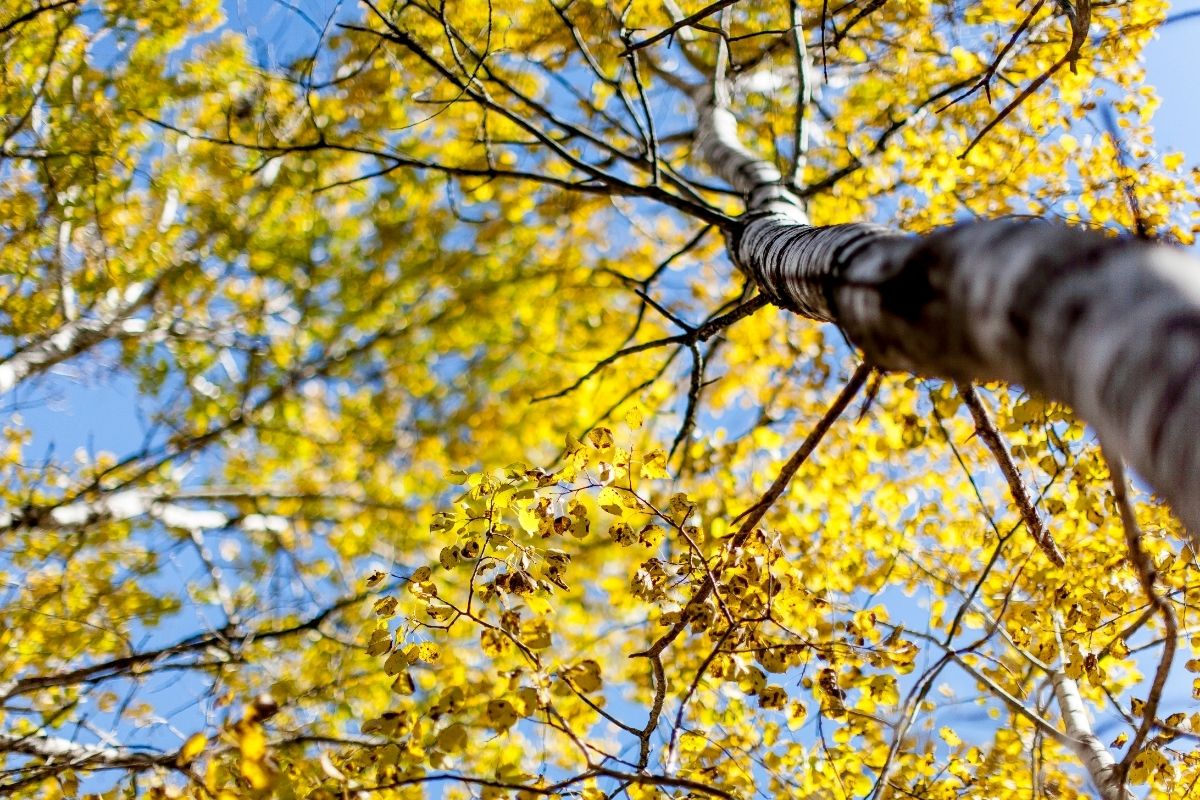
The yellow birch has a light brown trunk and produces hardwood. It is most often used for fuel by farmers, but can also be used for lumber, furniture, flooring, or other aspects of interior design.
5. Black Cherry

The black cherry tree is very fast growing and is found all over both North and South America. Technically, it is a shrub due to its small stature.
The black cherry tree produces pale and brown-red wood that is used for interior design. The tree/shrub is also used for nutrition by many different forms of wildlife.
6. American Chestnut
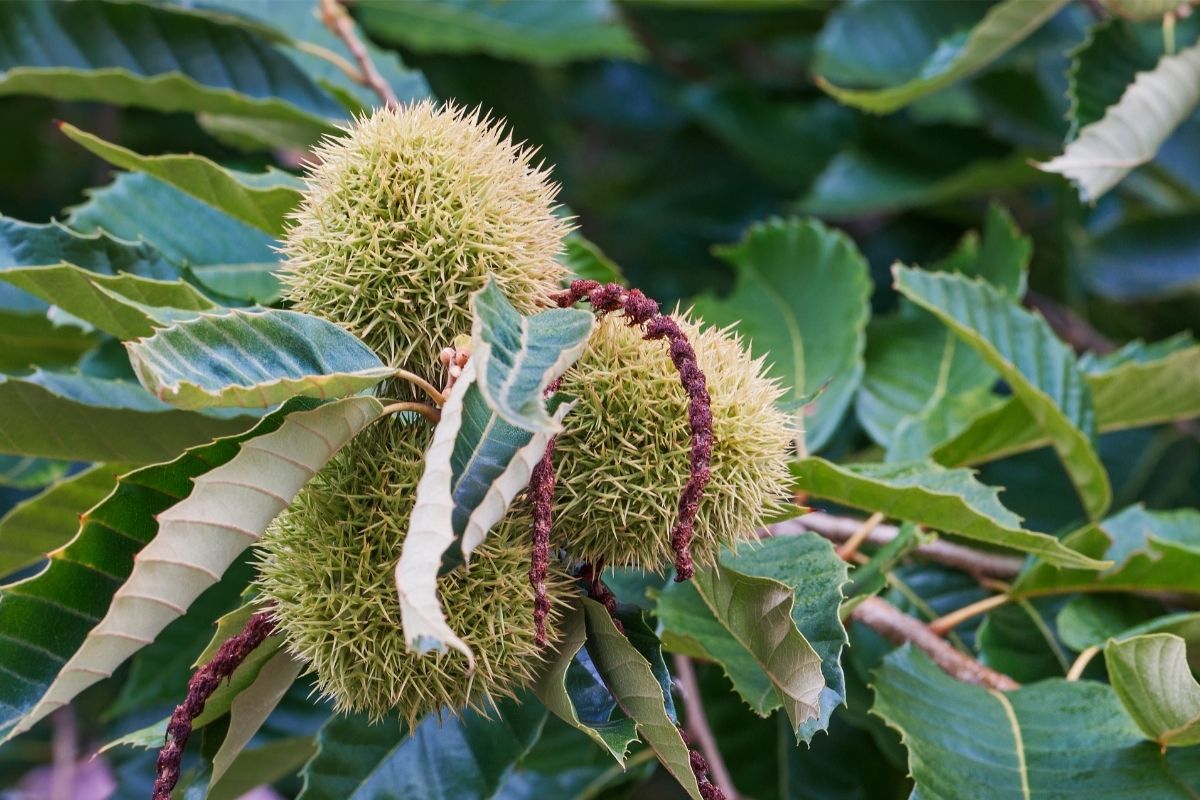
The American Chestnut is, oddly enough, native to North America. It is a deciduous tree and is related to other Chestnut species that are found in Asia and Europe.
The leaves are small and oval. They are green but have undertones that give the tree an overall brown hue.
7. American Elm
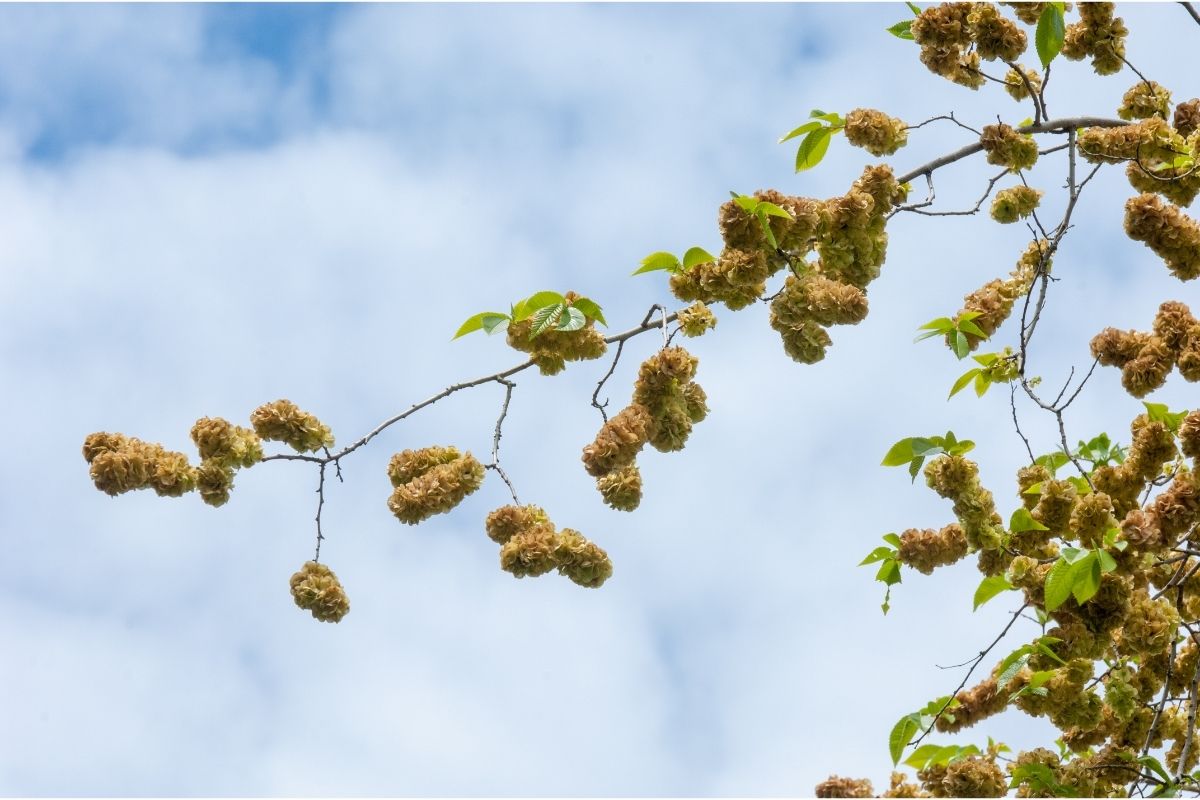
The American Elm is also a native of the Americas and is prized for its abundance in the bottomlands and its graceful and sweeping appearance.
It has light brown wood that contrasts wonderfully with the green leaves.
8. Red Spruce
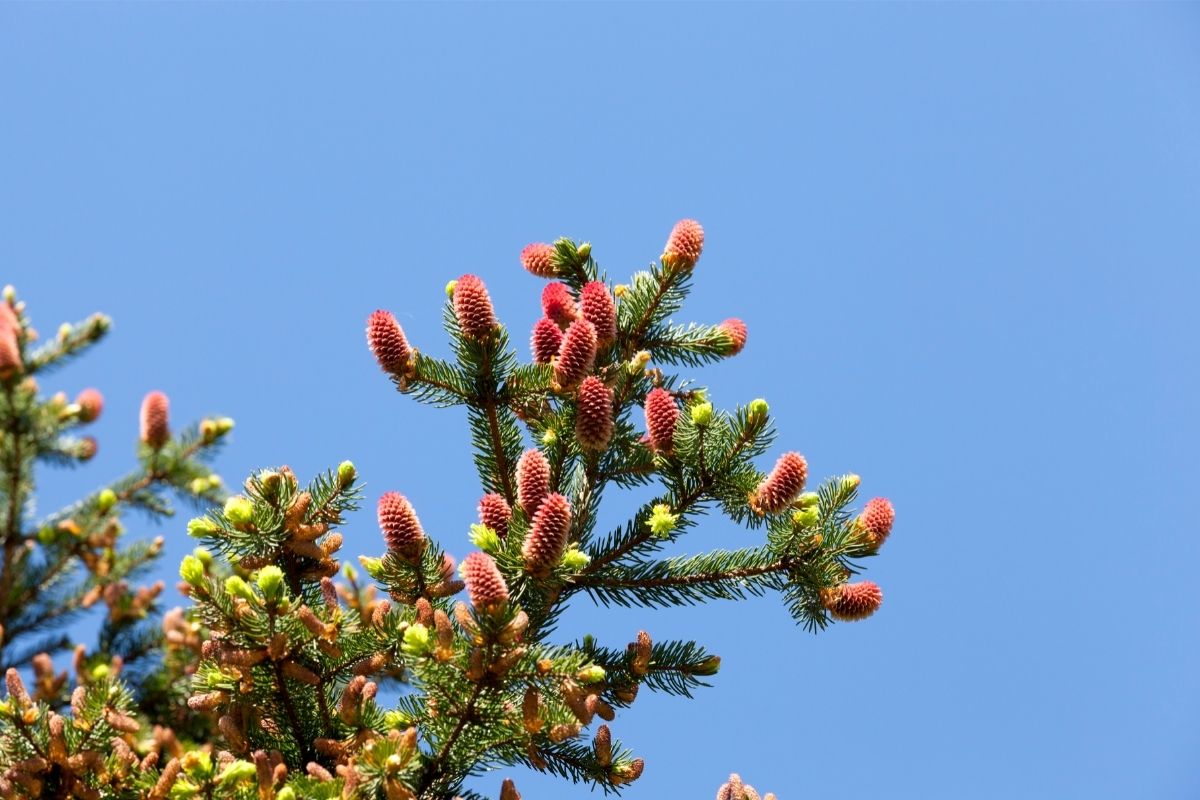
Who doesn’t love red spruce?
These wonderful trees are used primarily for musical instruments as the wood has some incredible resonant properties. The bark is brown with very warm undertones, hence its Red Spruce name.
9. Balsam Fir
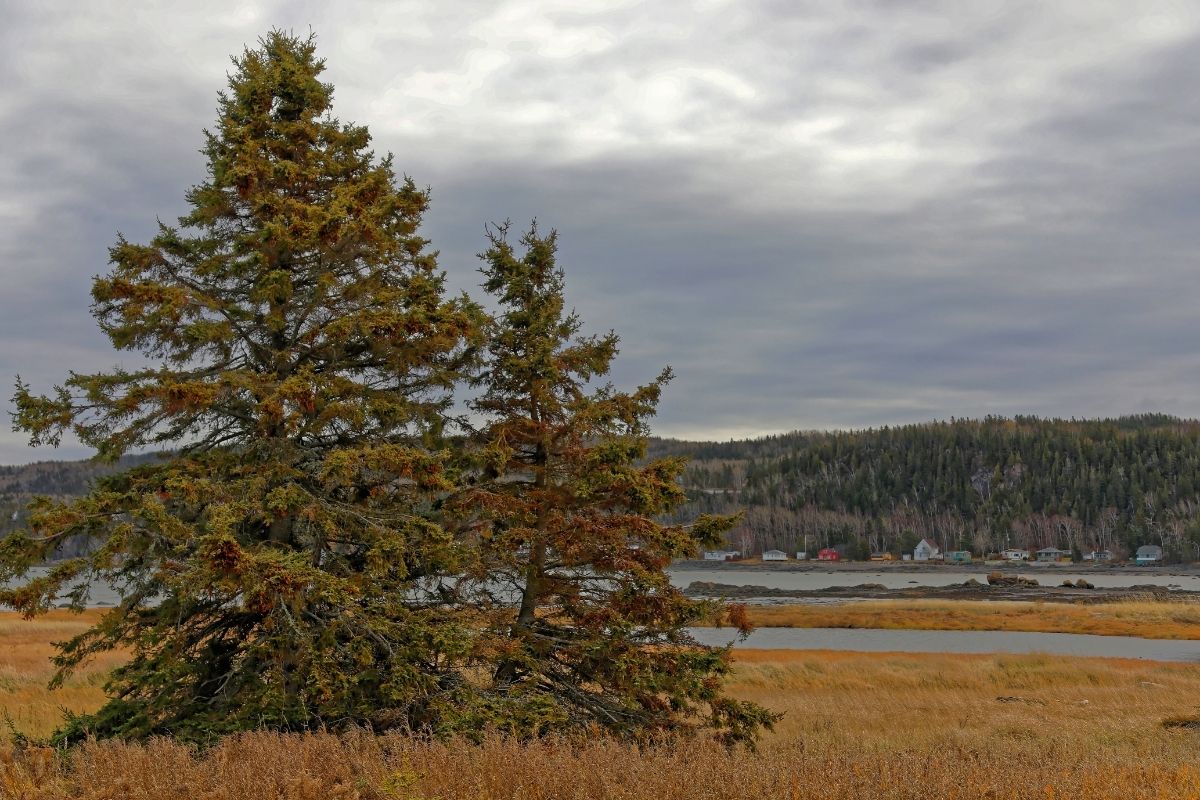
The Balsam Fir is a species of evergreen tree that is found in Canada and the most northeasterly point of the USA. It is primarily used as Christmas Trees in December.
The tree itself has a brown back and dark needles that produce strong scents when crushed and the essential oils are released.
10. Shadbush
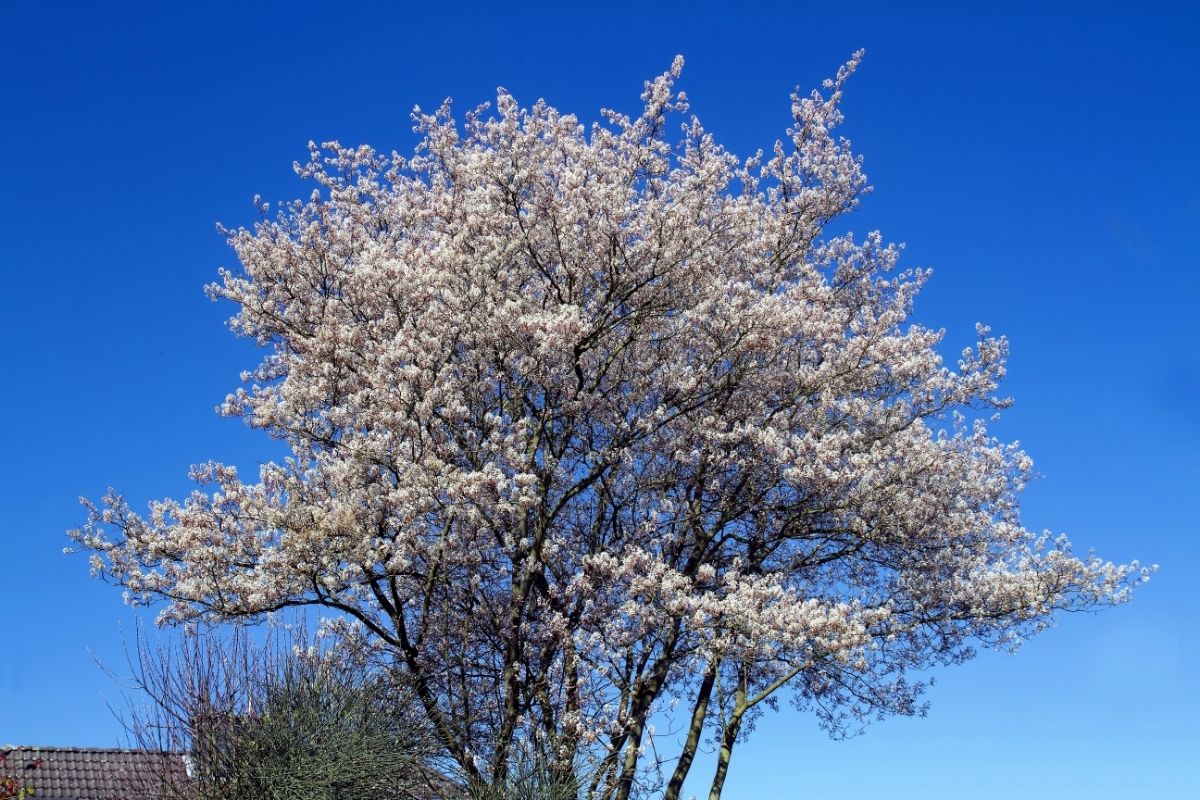
The shadbush has smooth brown bark and very attractive small white flowers. You can tell the age of a Shadbush tree by counting the lighter streaks in the bark.
11. Dogwood
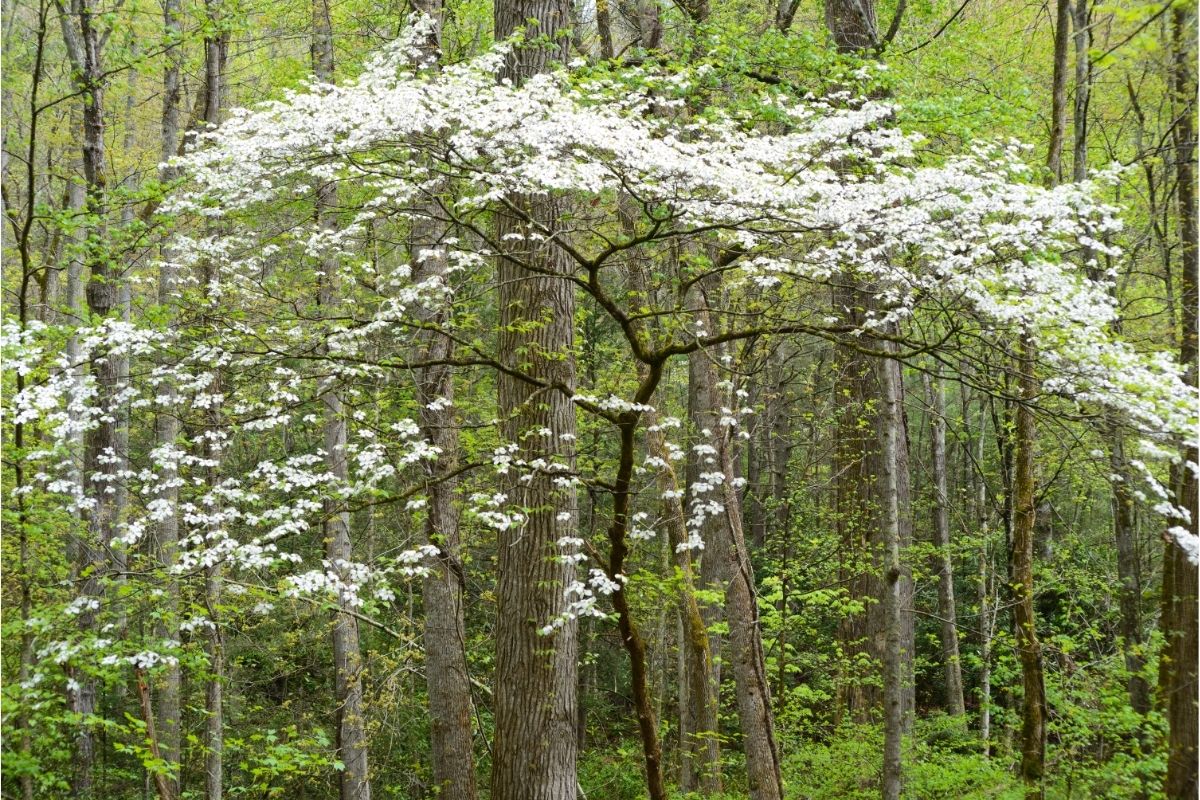
The dogwood tree is celebrated for its beauty for good reason – it is a truly striking tree. The blooms begin in the spring and last for several weeks, especially when the tree is well cared for.
The bark is ash brown. During the later stages of Fall, the leaves turn a similar shade of brown that is equally as attractive as the blooms in the Spring.
12. Sassafras
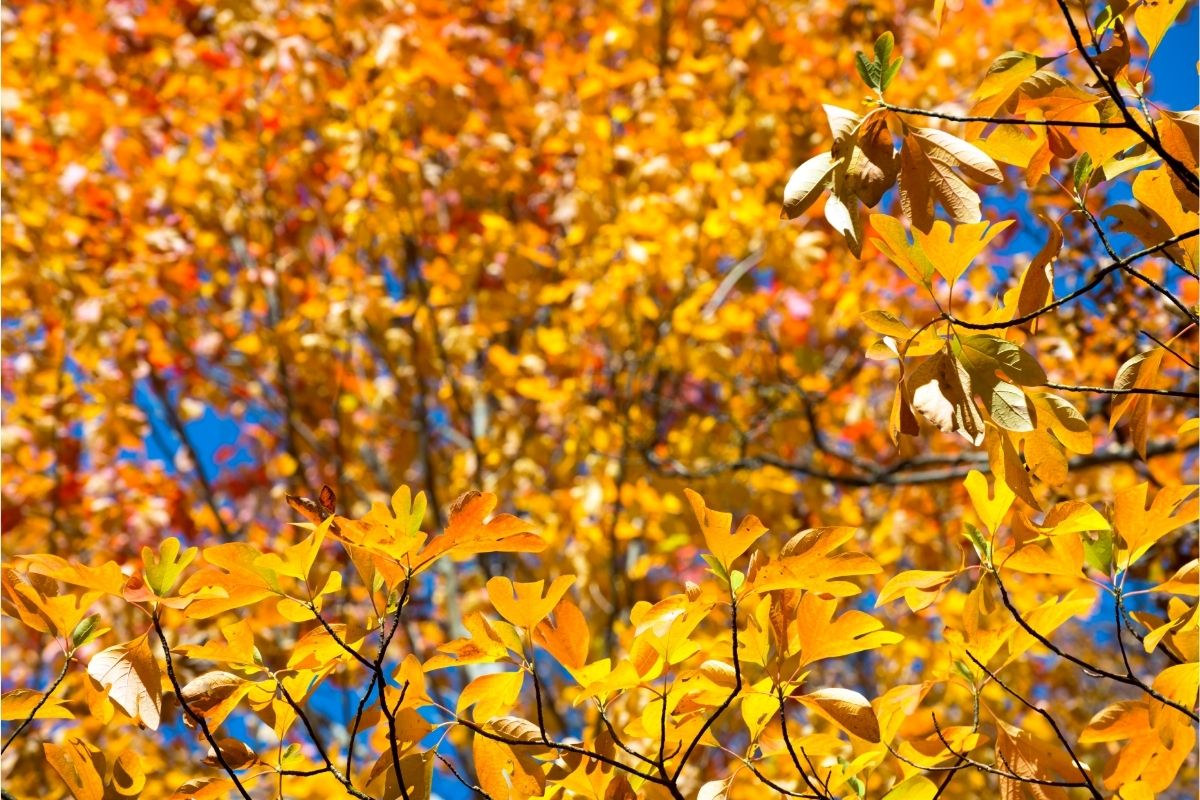
The Sassafras is a medium-sized tree that loves the sun. The bark is a wonderful warm brown color with deeply furrowed branches and a variety of leaf shapes. It truly is a remarkable tree to behold.
13. Scots Pine
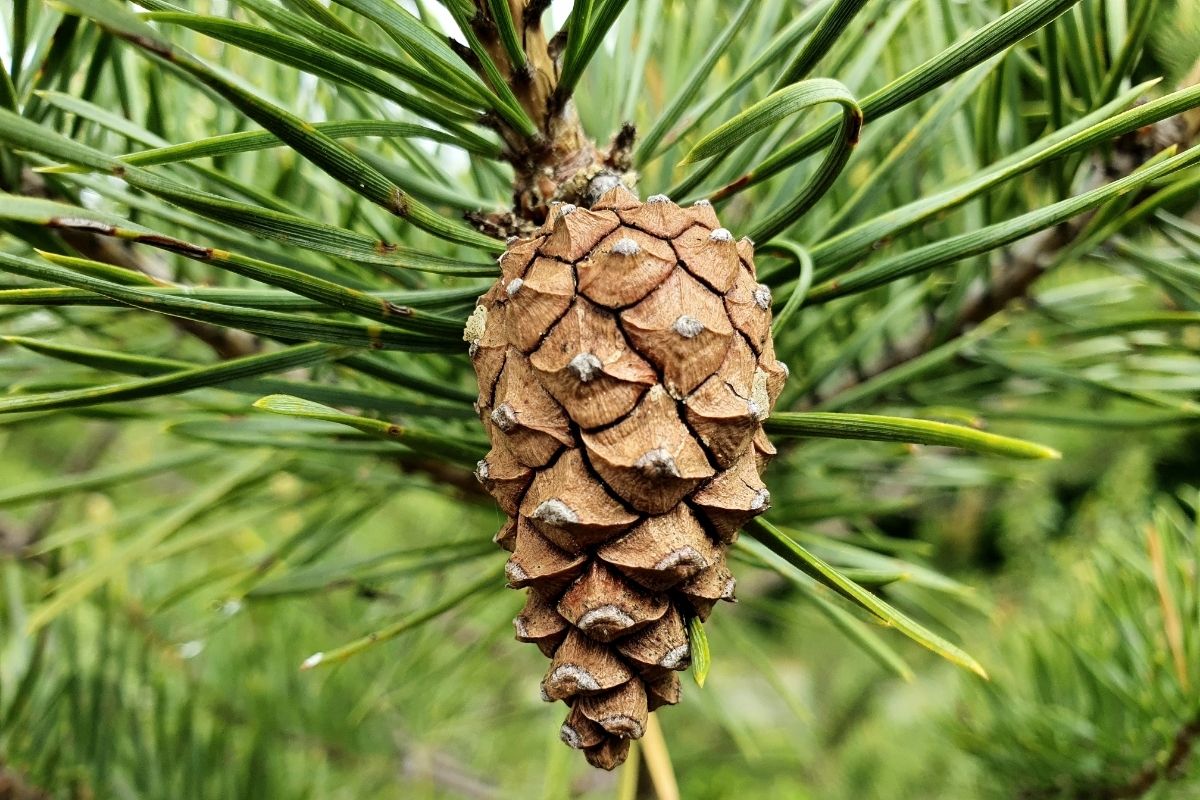
Otherwise known as the Scotch Pine, the Scots Pine is a large coniferous tree that is used as a Christmas tree in some parts of the US.
Unusually, this species does very well in poor quality or neglected soils with little to no nutrient value.
The wood from Scots Pine is coarse and brown and is used extensively as farming lumber.
14. Eastern White Pine
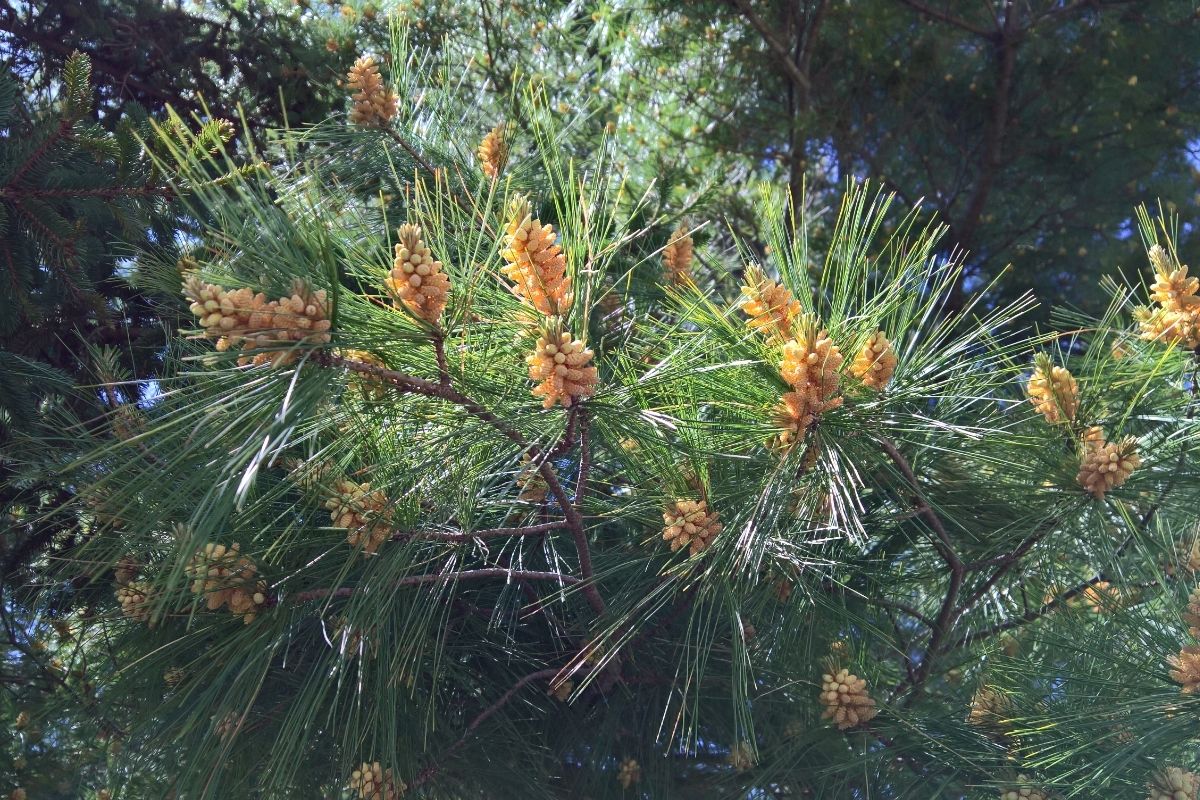
The Eastern White Pine is very common in both the UK and the US and loves open or exposed spots. The wood from these trees is lighter than other species of pine and is incredibly easy to work with.
The attractive light brown color makes it perfect for exposed interior beams, doors, or window sashes.
15. Pitch Pine
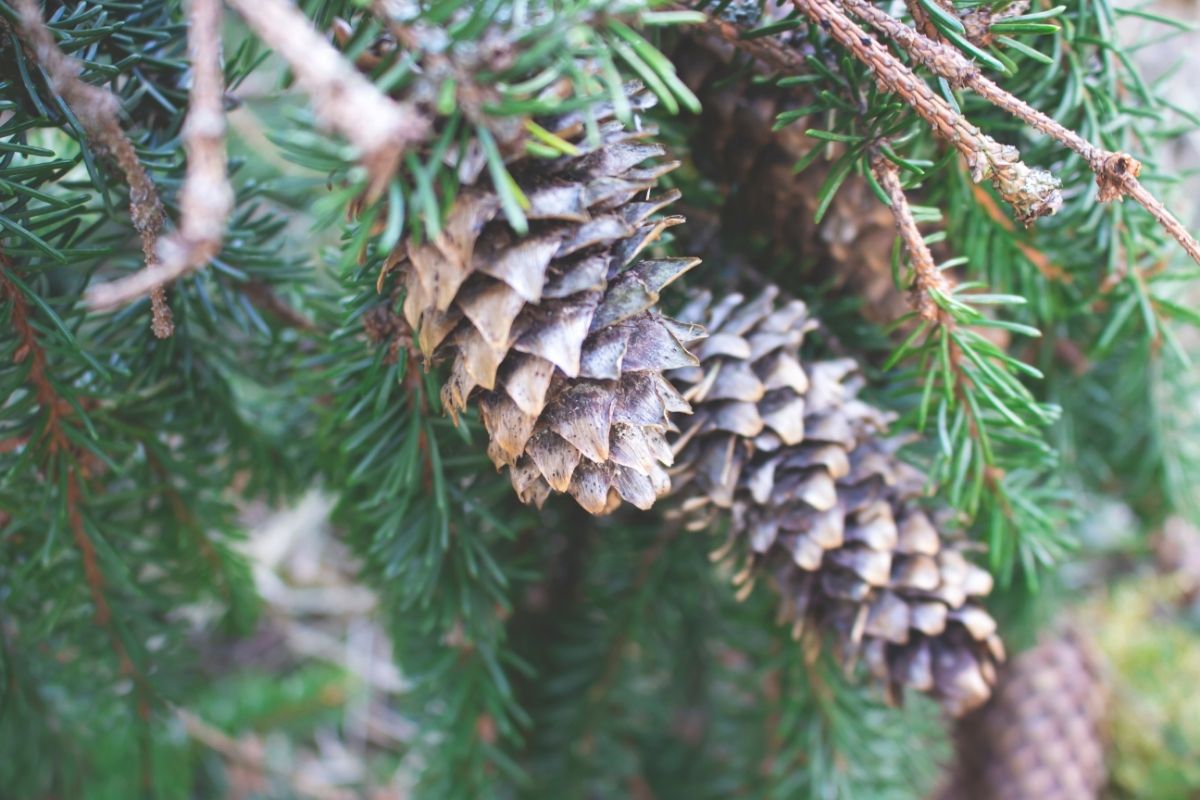
The Pitch Pine tree is smaller than other species of pine but can be easily grown where other plants or trees would fail.
The bark is a very warm brown that gets deeper in tone as the tree gets older. Interestingly, the brown bark is so thick that the trees are fire-resistant.
16. Black Oak
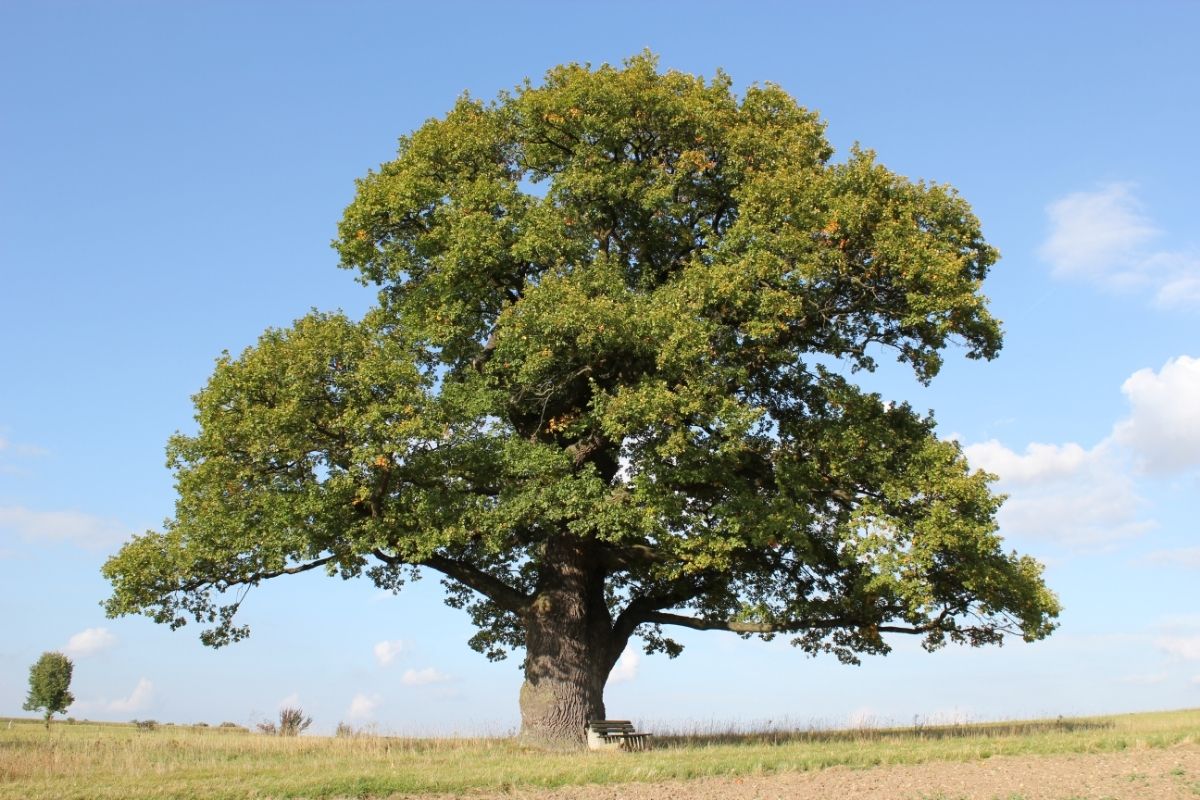
The Black Oak is found all over North America and is a less valuable alternative to the Red Oak. The Black Oak is very fast-growing and produces very durable wood that is used in construction or for fuel.
The bark is dark brown when the tree is young, but it gradually turns to gray as it ages and matures. If you peel back the bark, you will find a very pale brown skin that can be used for yellow dye.
17. Scarlet Oak
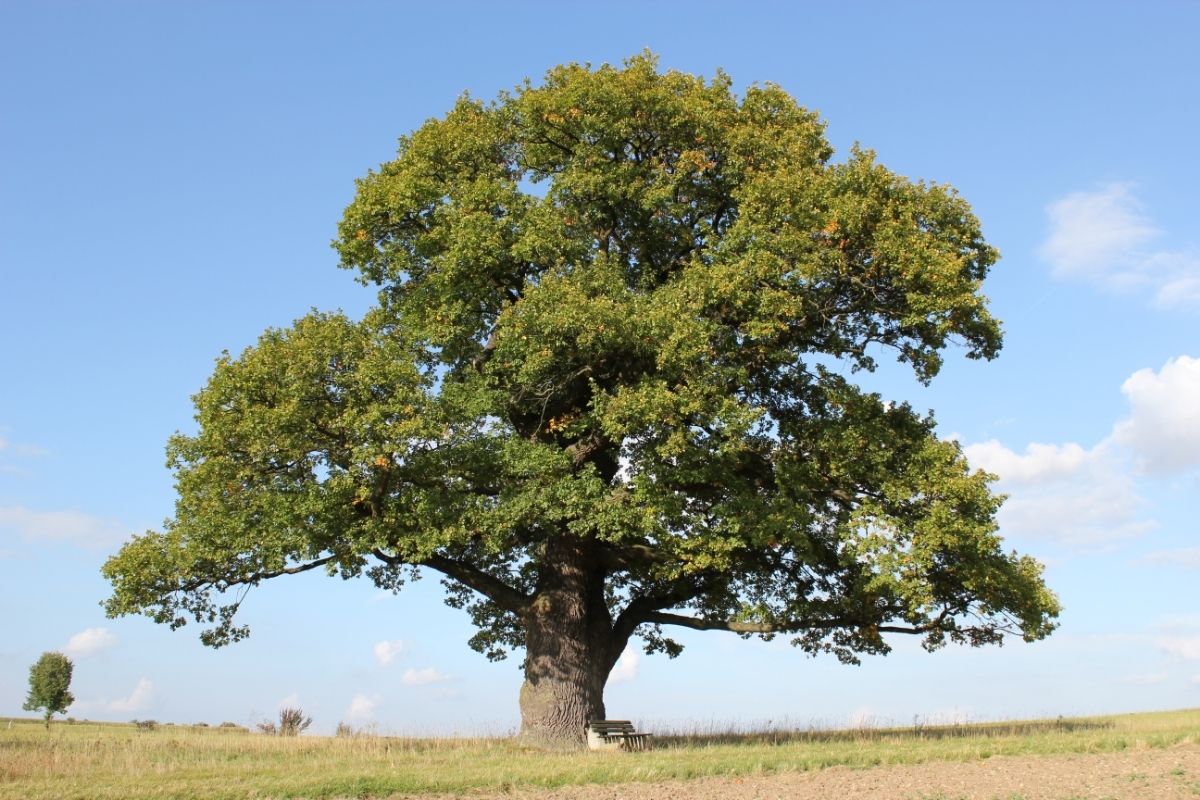
The Scarlet Oak is a vividly red tree that is indigenous to the Central US. The bark is light brown and smooth, creating a wonderful contrast with the deep red leaves.
Interestingly, the inner bark of the tree is not brown and is a similar shade of red to the leaves.
18. Chestnut Oak
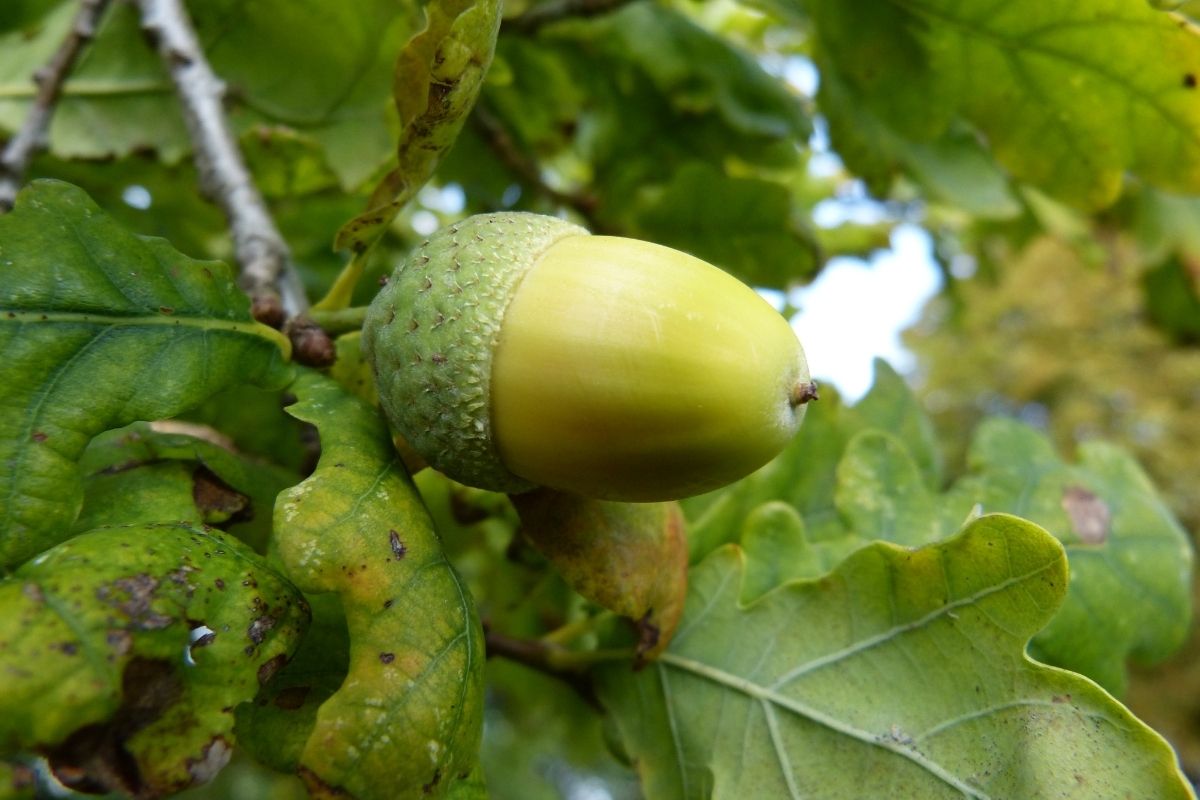
The Chestnut Oak is found in more easterly regions of the US. It is a medium-sized tree that can be found in more easterly regions of the US.
It is a cheaper alternative to the White Oak but has a much darker brown trunk. It develops into a very deep brown when the tree matures.
Final Thoughts
As you can see, there are a huge variety of brown trees – this is just a snapshot!
Almost all trees have a brown bark or branches because this is the color of pigment that is left over when the plant cells of the trunk dehydrate and thicken.
We hope you learned something from this article, here are other articles that you can learn from:
Nature is Truly Delightful! 10 Different Types Of English Trees







